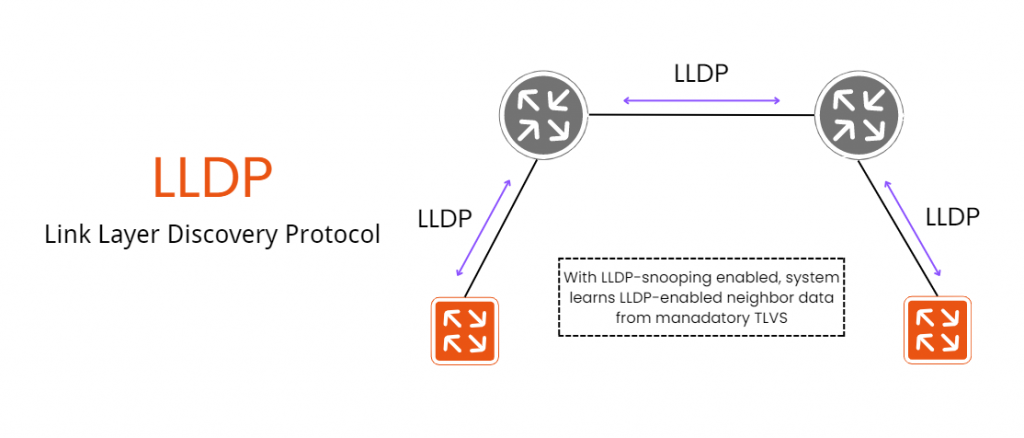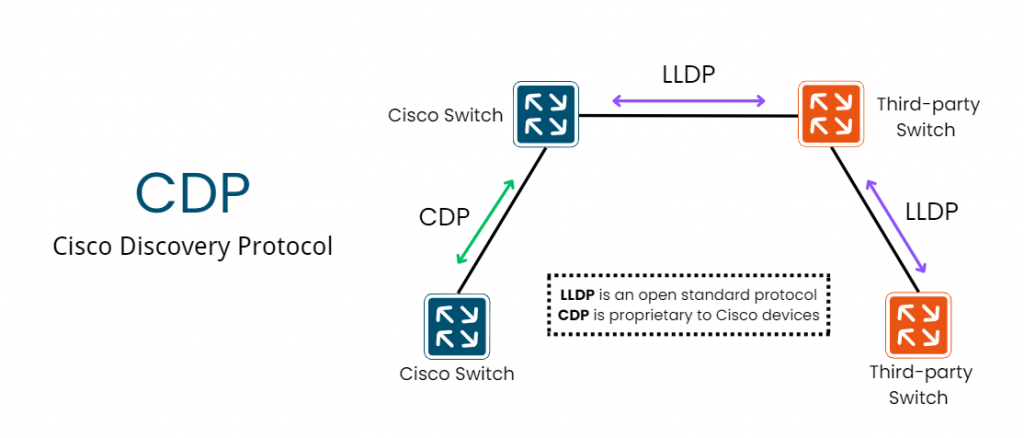Are you new to networking and wondering about the differences between LLDP and CDP discovery protocols? Or are you a seasoned network administrator looking for the best option for your organization? Either way, understanding the key differences between these two protocols is essential for the industrial switch. In this blog post, we’ll delve into what LLDP and CDP are, highlight their unique features, explore their advantages and disadvantages, and help you choose which protocol will work best for your specific needs. So sit back, relax, grab a cup of coffee (or tea), and let’s dive in!
What is LLDP?
Link Layer Discovery Protocol (LLDP) is a vendor-neutral protocol that operates on the Data Link layer of networking. Its primary function is to help network devices discover each other and share information about their capabilities, such as device type, port ID, VLAN ID, and more.
Unlike some proprietary discovery protocols like Cisco’s CDP or Nortel’s SONMP, LLDP can operate across different vendors’ equipment. This makes it an ideal choice for enterprises with heterogeneous networks where multiple vendors’ network devices are present.
Moreover, one of the most significant advantages of using LLDP over other protocols is its low overhead. It uses very minimal bandwidth compared to other discovery protocols in the market which means it does not introduce additional traffic into your network environment.
LLDP provides a standardized approach to discovering network topology without having to rely on any particular vendor-specific technology.

What is CDP?
Cisco Discovery Protocol, commonly known as CDP, is a proprietary protocol developed by Cisco Systems. It is used to gather information about directly connected Cisco equipment and devices. CDP runs on Layer 2 of the OSI model and enables network administrators to view data such as device type, IP address, software version, platform name, and port ID.
CDP works by exchanging messages between directly connected devices. These messages are sent every 60 seconds by default but can be configured for longer or shorter periods depending on the administrator’s needs. The primary purpose of these messages is to provide detailed information about each device in the network.
One significant advantage of CDP is that it allows network administrators to quickly identify problems within their networks through an automatic discovery process. This process helps with troubleshooting connectivity issues and identifying unauthorized devices within a company’s infrastructure.
Another benefit of using CDP includes providing valuable information for network mapping tools like topology maps. Administrators can use this tool to see how different components connect together in their system architecture.
While CDP may have some limitations due to its proprietary nature which limits interoperability with other vendors’ systems; it remains one of the most widely used protocols in many enterprise networks today due to its unique features such as automated discovery processes and ease-of-use capabilities.

Key Differences Between LLDP and CDP
LLDP and CDP are two of the most commonly used discovery protocols in networking. While they both serve a similar purpose, there are some key differences between them that set them apart.
One significant difference is that LLDP is an open standard protocol, while CDP is proprietary to Cisco devices. This means that only Cisco devices can use CDP, whereas any device can use LLDP.
Another difference is how often each protocol sends out discovery messages. LLDP sends out messages every 30 seconds by default, while CDP sends messages less frequently at five minute intervals.
LLDP also offers more detailed information about network topology than CDP does. For example, it includes information on port VLAN ID and management addresses for connected devices.
On the other hand, one advantage of using CDP over LLDP is that it provides more granular control over power consumption in Power over Ethernet (PoE) environments.
When deciding which protocol to use in your network environment, it’s important to consider factors such as vendor compatibility and desired level of detail in topology mapping. Ultimately, the choice will depend on your specific needs and preferences.
| CDP VS LLDP | ||
|---|---|---|
| CDP | LLDP | |
| Cisco-proprietary | YES | NO |
| Runs at layer 2 | YES | YES |
| Holdtime | 180 seconds | 120 seconds |
| Global Config Command | cdp run / no cdp run | lldp run / no lldp run |
| Interface-level Command | cdp enable / no cdp enable | lldp receive / no lldp receive lldp transmit / no lldp transmit |
What is the advantage of LLDP over CDP?
LLDP and CDP are both widely used discovery protocols in networking. However, LLDP has a few advantages over CDP that make it an attractive option for many organizations.
One of the biggest advantages of LLDP is its vendor-agnostic nature. Unlike CDP, which is proprietary to Cisco devices, LLDP can be used with any network equipment from different vendors. This allows for greater flexibility and promotes interoperability between different types of devices.
While CDP only supports one VLAN per link between switches, LLDP can convey information about multiple VLANs on a single link. This feature makes it easier to configure complex networks with multiple VLANs.
LLPD also provides more detailed information about connected devices than CDP does. For example, it can provide device model numbers and firmware versions in addition to basic connectivity information like MAC addresses and port IDs.
In summary, while both LLDP and CDP have their strengths, the vendor-agnostic nature of LLNP coupled with multi-VLAN support make it an attractive choice for many organizations seeking better interoperability in their networks.
How to Choose the Right Protocol for Your Network
When it comes to choosing the right protocol for your network, there are several factors you should consider. Firstly, think about what devices you have in your network and whether they support LLDP or CDP. If all of your devices support both protocols, then you can choose based on other factors.
Another important factor is the size and complexity of your network. LLDP is known to be better suited for larger networks with more complex topologies as it offers greater flexibility in terms of customization options.
On the other hand, if simplicity is key for your network infrastructure or if most of your devices come from a single vendor such as Cisco, then CDP may be a better choice due to its tight integration with Cisco hardware.
Additionally, consider the level of control and security that you require over your network traffic. LLDP allows for more granular control over traffic flow whereas CDP provides simpler management features but could potentially pose security risks by revealing information about connected devices.
When choosing between LLDP and CDP protocols, carefully analyze each protocol’s strengths and weaknesses against the unique needs of your own organization before making a final decision.
Conclusion
Both LLDP and CDP are valuable discovery protocols that can help you better understand how your network is configured. While they share many similarities, there are also key differences between the two that make one or the other more suitable for certain situations.
LLDP is an open standard that offers greater flexibility and interoperability with a wider range of devices. On the other hand, CDP is a proprietary protocol that may be more reliable in Cisco environments.
When deciding which protocol to use in your network, it’s important to consider factors such as device compatibility, security requirements, and vendor preferences. By understanding the strengths and weaknesses of each protocol, you can make an informed decision that meets the unique needs of your organization.
Whether you choose LLDP or CDP will depend on a variety of factors specific to your environment. Regardless of which one you choose though, implementing a discovery protocol like these can provide invaluable insight into how your network functions and help ensure its optimal performance.






